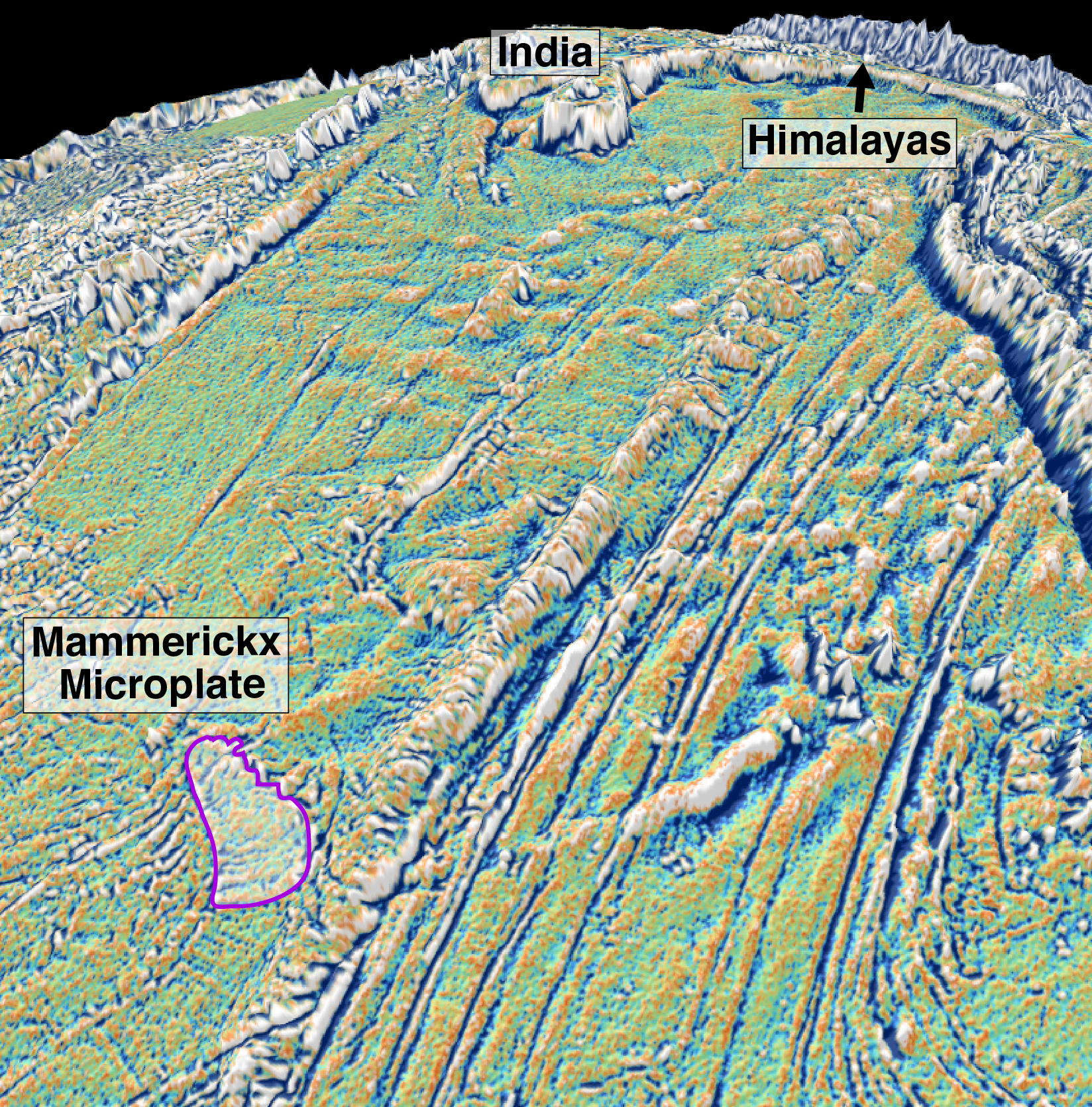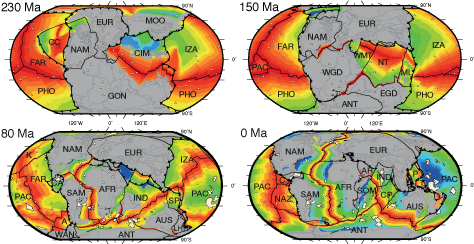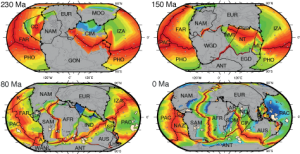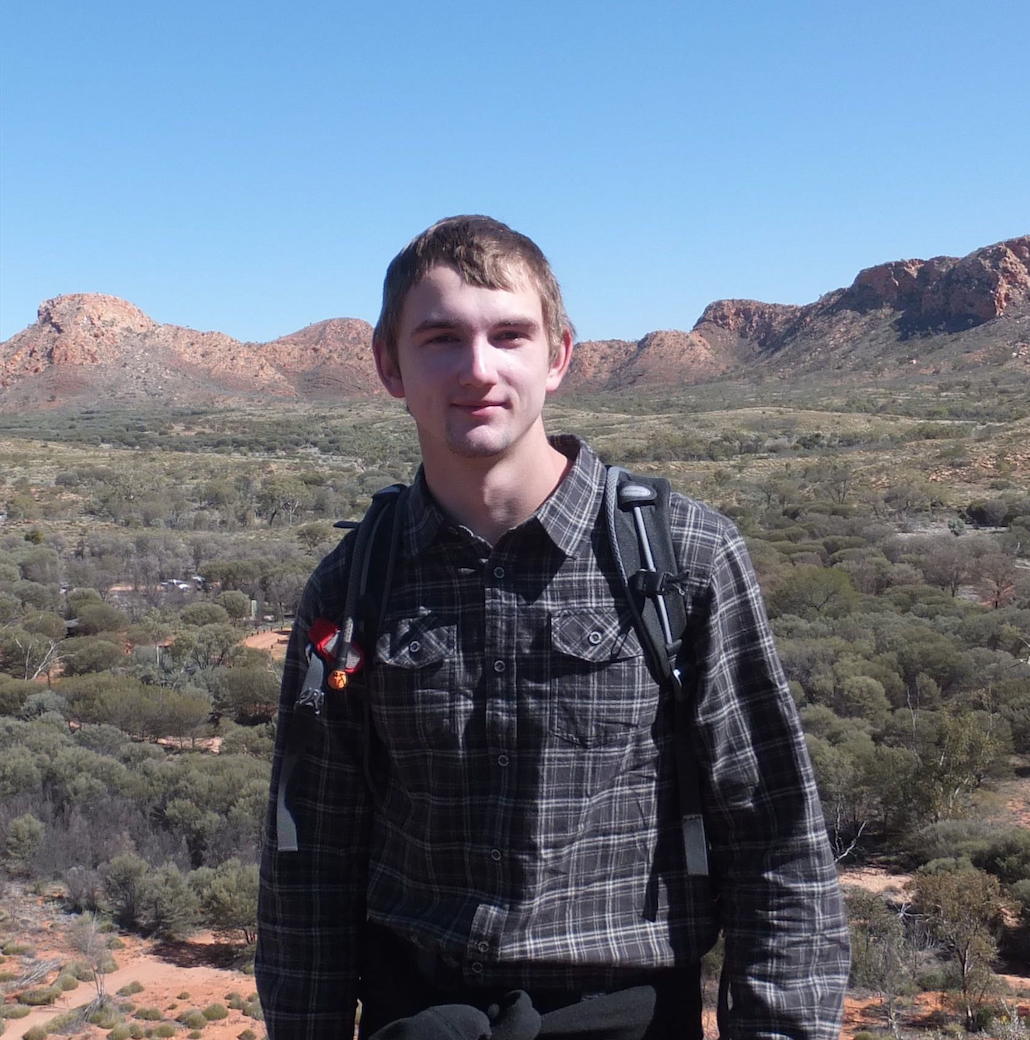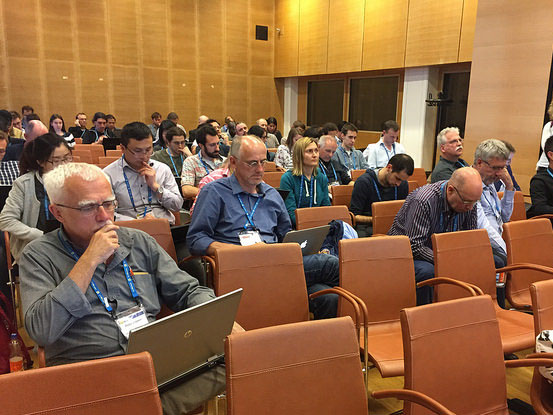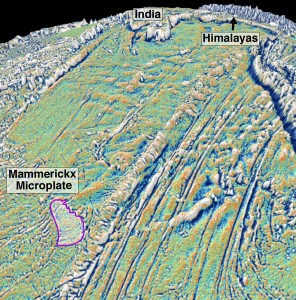 An international team of scientists led by the University of Sydney’s School of Geosciences has discovered that the crustal stresses caused by the initial collision between India and Eurasia cracked the Antarctic Plate far away from the collisional zone and broke off a fragment the size of Tasmania in a remote patch of the central Indian Ocean.
An international team of scientists led by the University of Sydney’s School of Geosciences has discovered that the crustal stresses caused by the initial collision between India and Eurasia cracked the Antarctic Plate far away from the collisional zone and broke off a fragment the size of Tasmania in a remote patch of the central Indian Ocean.
The ongoing tectonic collision between the two continents produces enormous geological stresses that build up along the Himalayas and lead to numerous earthquakes every year – but now scientists have unravelled how stressed the Indian Plate became 47 million years ago when its northern edge first collided with Eurasia. … Read more…

